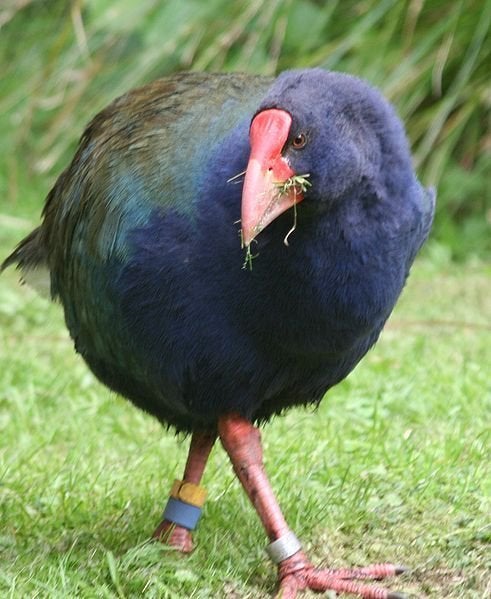
By Sean Treacy
The first humans to settle the Pacific islands left a wave of extinct bird species in their wake. But gaps in the fossil record make it difficult to determine just how massive the loss was. Now, a new modeling study accounts for those gaps, pegging the lost-species count at nearly 1000—about 10% of the bird species in the world.
Whenever humans settle a land mass for the first time, extinctions tend to follow. The victims are often land animals with enough meat to make them appealing hunting targets, such as mammoths and moas. Numerous large animals in Australia died out after the first human settlers arrived more than 40,000 years ago, and the first North Americans may also have rendered many big mammals extinct between 10,000 and 20,000 years ago.
When humans first arrived on remote Pacific islands such as Fiji and Hawaii between 3500 and 700 years ago, they found birds that had evolved to become flightless, plump, and vulnerable after living in ecosystems without major predators. Humans probably hunted many of these birds to extinction, and some species also lost their habitats when humans burned away swaths of trees to make way for agriculture. "You can imagine, when you don't have chainsaws and things, the easiest way to clear forest is to set it on fire," says conservation ecologist and lead author Richard Duncan of the University of Canberra.
Scientists see some of these extinct birds in the fossil record, but that record is notoriously incomplete. Rough estimates have placed the total bird extinction count from about 800 to more than 2000. Duncan and his colleagues wanted to get a well-developed picture of exactly how many bird species likely died off when humans arrived.
The team decided to look for nonpasserine land birds on 41 of the 269 larger islands in the eastern Pacific. Passerines are birds that perch, such as songbirds, whereas nonpasserines are everything else, including waterfowl, birds of prey, parrots, pigeons, and rails. The team focused on nonpasserine land birds because the same large bodies that made them appealing prey also make their bones easier for archeologists to find.
The researchers then used a statistical model to estimate the number of undiscovered, extinct, nonpasserine land birds by comparing their fossils to those of species that are still alive today. "The proportion of living birds that we know are missing from the fossil record gives you an idea of how many extinct species are [also] missing," Duncan says.
When the researchers ran the fossil data through their model, they estimated that at least 983, and as many as 1300, nonpasserine land bird species went extinct across the Pacific islands as human civilization took root there, they report today in the Proceedings of the National Academy of Sciences. That means the arrival of humans in the Pacific spelled doom for roughly 10% of the world's bird species. The new numbers fall within the scope of the previous estimates but are more precise.
This kind of sophisticated ecological modeling is an important way of nailing down the details of how many extinct species have yet to be discovered, says conservation biologist Stuart Pimm of Duke University in Durham, North Carolina, who was not involved with the study. "There's a bunch of places where there ought to be a bunch of bodies," he says. "It points to the fact that there are many more specimens to be found."
ScienceNOW, the daily online news service of the journal Science
